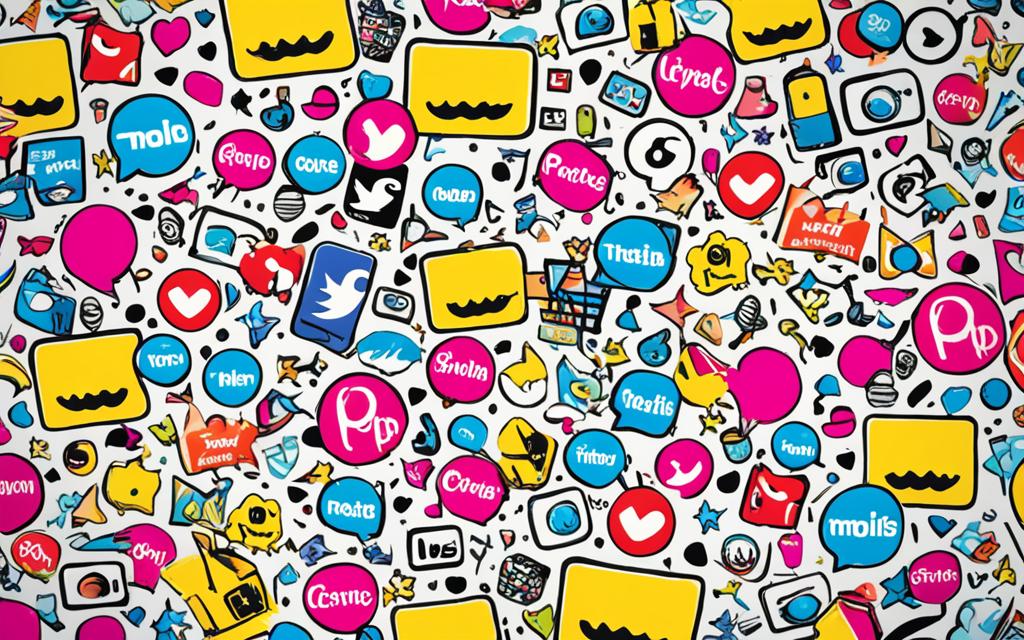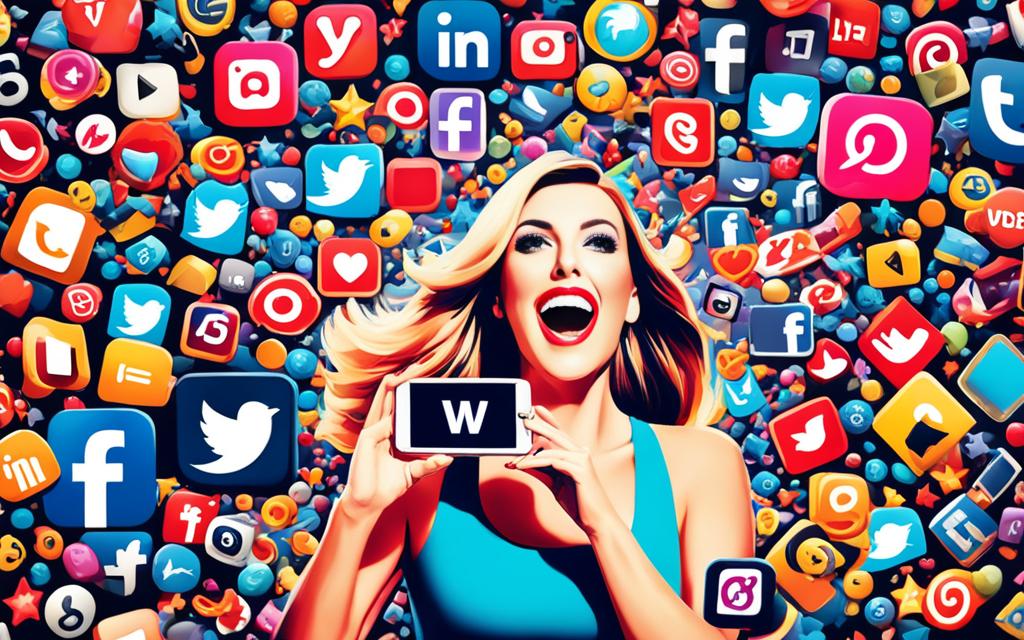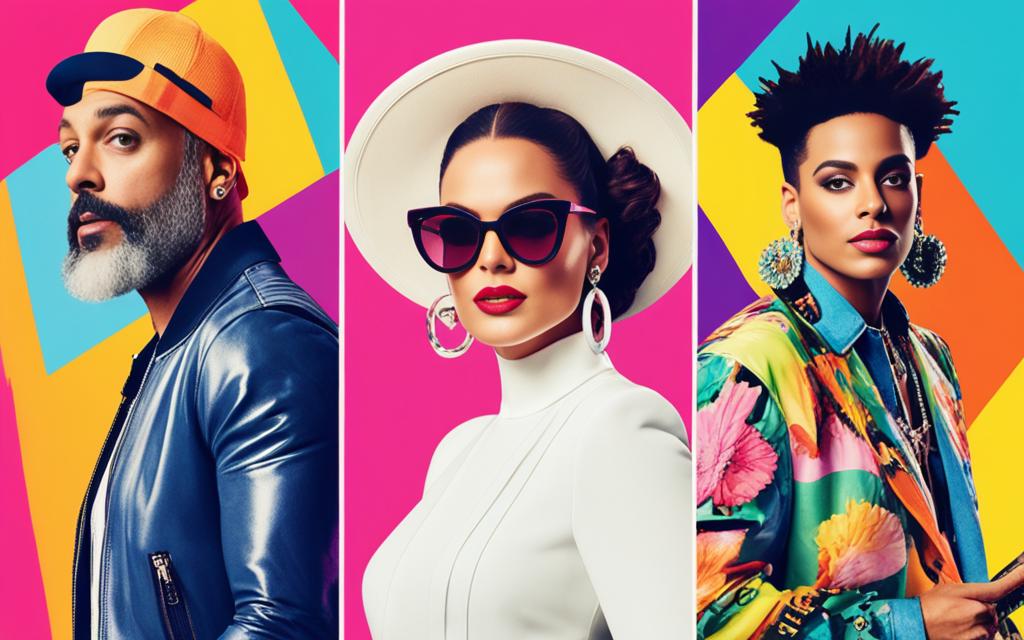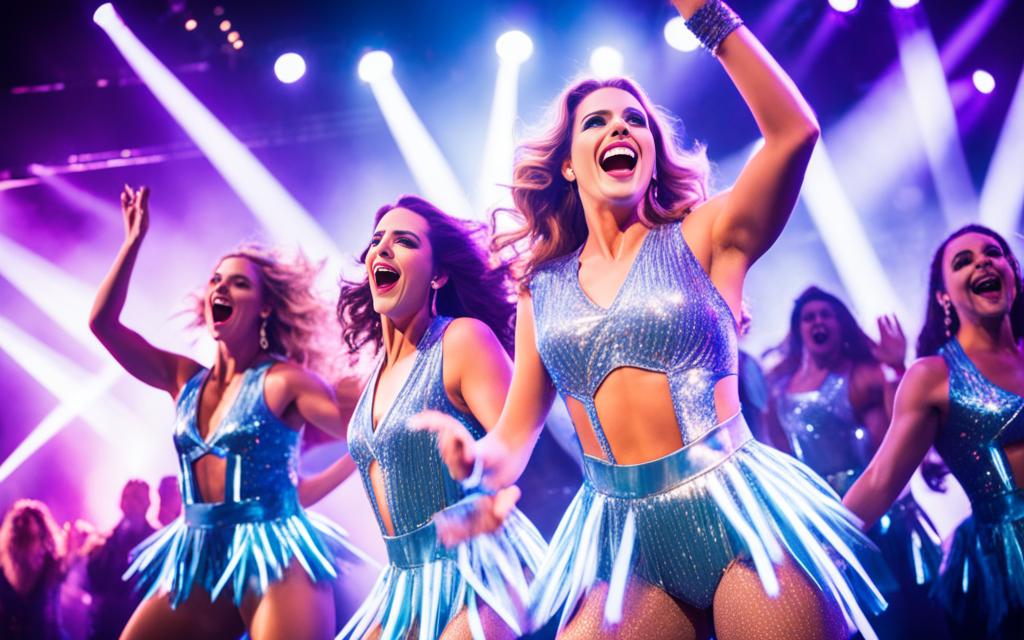Welcome to the world of social media influencers and their undeniable impact on pop culture. In this article, we will explore the dynamic relationship between Social Media Influencers and Pop Culture, uncovering how these influencers have become powerful agents of change in shaping the cultural landscape. From fashion and beauty trends to music and brand collaborations, we will delve into the various ways in which these influencers play a pivotal role.
With the rise of social media platforms such as Instagram, YouTube, and TikTok, influencers have gained massive followings and an influential voice. Their ability to connect with audiences on a personal level has catapulted them into the mainstream, allowing them to dictate and redefine what is considered trendy and cool.
But what exactly is an influencer? An influencer is an individual who has established credibility within a specific niche and has the power to affect the purchasing decisions and opinions of their followers. They curate and share content that resonates with their audience, whether it’s through lifestyle vlogs, fashion hauls, or beauty tutorials.
In the following sections, we will examine the rise of influencers in pop culture and explore the key players in different niches. We will also delve into the influence of influencers on fashion and beauty trends, as well as their impact on the music industry. Additionally, we will discuss the importance of brand partnerships and collaborations in the influencer industry. Finally, we will analyze the influence of social media platforms on the success and reach of influencers.
Through a closer look at the evolving relationship between social media influencers and pop culture, we hope to shed light on the profound influence they wield and the ways in which they shape the cultural zeitgeist. So, let’s embark on this exciting journey and uncover the power of social media influencers in shaping the world we live in.
The Rise of Influencers in Pop Culture
Over the past decade, we have witnessed a profound shift in the dynamics of pop culture. Traditional celebrities, who once held a monopoly over trends and consumer behavior, are now sharing the spotlight with a new breed of influential figures – social media influencers.
With the rise of influencers, the power dynamics have drastically changed. These individuals, armed with their authenticity, relatability, and social media prowess, have successfully carved out a space for themselves in the world of pop culture. They have built dedicated followings and an undeniable influence over their audience’s purchasing decisions and lifestyle choices.
But what exactly is driving the rise of influencers? Unlike traditional celebrities who often seemed unreachable and untouchable, influencers provide a sense of accessibility and relatability that resonates with their followers. They create content that feels personal and engaging, making their audience feel like a part of their inner circle.
“Influencers bring a fresh and authentic perspective to pop culture. They are not bound by the limitations imposed by traditional media, allowing them to connect with a diverse range of audiences on a global scale.” – Industry Expert
This shift in power has not gone unnoticed by brands and marketers. Influencers have become a crucial part of many successful marketing campaigns, with their endorsements and collaborations driving sales and brand exposure. Moreover, by partnering with influencers, brands can tap into niche markets and target specific demographics with efficiency and precision.
While traditional celebrities still hold significant sway in certain circles, the rise of influencers has created a more democratic pop culture landscape. Influencers are no longer just trend followers – they have become trendsetters, shaping the fashion, beauty, and music scenes in ways that were unimaginable just a few years ago.
So, what does the future hold for influencers and their role in pop culture? Only time will tell. But one thing is certain – the rise of influencers is here to stay, and their impact on shaping trends and consumer behavior will only continue to grow.
| Influencers | Traditional Celebrities |
|---|---|
| Authenticity and relatability | Glamour and exclusivity |
| Engaging and personal content | Crafted and curated images |
| Accessible and relatable | Unreachable and untouchable |
| Niche markets and specific demographics | Mass appeal and broad reach |
Key Influencers in Different Niches
When it comes to influencing culture and shaping trends, social media influencers play a significant role in various niches. From fashion and beauty to fitness and travel, these key influencers have a massive impact on their audiences and industries.
Let’s take a closer look at some of the prominent influencers in different niches:
Fashion Influencers
In the world of fashion, influencers like Chiara Ferragni (@chiaraferragni) and Danielle Bernstein (@weworewhat) have built their empires by sharing their style inspiration and collaborating with renowned fashion brands. With millions of followers, they have the power to drive sales and set trends.
Beauty Influencers
Beauty gurus like Huda Kattan (@hudabeauty) and James Charles (@jamescharles) have revolutionized the beauty industry through their makeup tutorials, product reviews, and innovative collaborations. Their expertise and authenticity have garnered immense trust from their followers.
Fitness Influencers
In the realm of fitness, influencers such as Kayla Itsines (@kayla_itsines) and Joe Wicks (@thebodycoach) have transformed people’s approach to health and fitness. Through challenging workouts, meal plans, and motivational content, they inspire millions to adopt a healthier lifestyle.
Travel Influencers
Travel enthusiasts like Murad and Nataly Osmann (@followmeto) have captured the hearts of many with their breathtaking travel photography. They take their followers on incredible journeys around the world, showcasing unique destinations and inspiring wanderlust.
These are just a few examples of the key influencers in different niches. Their ability to create compelling content and connect with their audiences has positioned them as influential figures who shape trends and consumer behavior.
As you can see, these influencers have cultivated a loyal following and have leveraged their influence to collaborate with brands and drive engagement. Their impact stretches far beyond social media, influencing consumer choices, and shaping popular culture.
| Influencer | Social Media Platform | Number of Followers |
|---|---|---|
| Chiara Ferragni | 24.8 million | |
| Danielle Bernstein | 2.7 million | |
| Huda Kattan | YouTube, Instagram | 50.5 million |
| James Charles | YouTube, Instagram | 25.1 million |
| Kayla Itsines | 12.8 million | |
| Joe Wicks | 4.2 million | |
| Murad and Nataly Osmann | 5.2 million |
Influencers and Fashion/Beauty Trends
Social media influencers have had a profound impact on fashion and beauty trends. By leveraging their platforms and engagement with followers, influencers have become powerful tastemakers and trendsetters in the industry. Their ability to connect with audiences on a personal level has led to a significant shift in consumer behavior and purchasing decisions.
When influencers endorse a specific fashion or beauty product, their followers take notice. The influence is not just limited to showcasing the product, but also extends to how it can be styled or used, creating a desire among consumers to follow suit. This kind of endorsement can lead to increased sales and brand awareness for the products being promoted, ultimately shaping the overall fashion and beauty landscape.
One of the key reasons why influencers have such a strong impact on fashion and beauty trends is their authenticity. Unlike traditional advertising, influencers are seen as relatable figures who offer genuine recommendations. Their followers trust their opinions and are more inclined to try out the products they endorse.
“Influencers have become the ultimate fashion and beauty authorities, dictating what’s hot and what’s not.” – Jenna Williams, Fashion Blogger
In addition to endorsing products, influencers also use their creativity and personal style to inspire their followers. They showcase different fashion and beauty looks, experiment with new trends, and provide styling tips and tricks. This continuous stream of fresh and innovative content keeps their followers engaged and hungry for more.
Let’s not forget the power of influencer collaborations with fashion and beauty brands. When influencers partner with well-known brands to create their own product lines or limited-edition collections, it creates a sense of exclusivity and further drives consumer interest. These collaborations often result in sold-out products and long waiting lists as consumers rush to get their hands on items associated with their favorite influencers.
It’s important to note that influencers don’t just follow trends; they also have the ability to set them. By showcasing their personal style and unique fashion and beauty choices, they inspire their followers to think outside the box and embrace their individuality. This has led to a diversification of trends, with a greater focus on inclusivity and representation.
In conclusion, social media influencers have revolutionized the fashion and beauty industry. Through their endorsements, creative content, and collaborations, they have significantly impacted the way consumers engage with fashion and beauty trends. Whether setting new trends or amplifying existing ones, influencers continue to shape the industry and drive consumer choices.
Influencers and the Music Industry
Social media influencers have become instrumental in shaping various industries, and the music industry is no exception. With their massive online followings and ability to capture the attention of millions, influencers have emerged as key players in promoting artists, facilitating collaborations, and influencing music trends.
One of the ways influencers contribute to the music industry is through the promotion of artists and their songs. By sharing their favorite tracks or incorporating them into their content, influencers expose their followers to new music and help generate buzz around emerging artists. This organic and authentic approach to promotion can significantly boost an artist’s visibility and reach, giving them the opportunity to connect with a broader audience.
In addition to promoting artists, influencers also play a pivotal role in facilitating collaborations within the industry. Social media platforms have broken down barriers between artists and their followers, allowing influencers to bridge the gap and create meaningful connections. Through collaborations with influencers, artists can tap into their dedicated fan bases, leverage their unique personalities, and create exciting content that resonates with a wider audience.
“Influencers have the power to shape music trends and dictate what becomes popular.”
Influencers hold significant influence over their followers’ tastes and preferences. By showcasing their own musical preferences and endorsing specific artists or genres, influencers have the power to shape music trends and dictate what becomes popular. They can introduce their followers to new genres, revive interest in classic hits, or amplify the success of a particular song through viral challenges or dance routines. The influence of influencers in the music industry goes beyond mere promotion – it extends to shaping the cultural landscape and molding the soundtracks of our lives.
Furthermore, influencer endorsements have proven to be a powerful tool in boosting sales and streaming numbers for artists. When an influencer vouches for a song or an album, their followers are more likely to trust their recommendation and give it a listen. This can lead to increased streams, downloads, and even ticket sales for live performances. The ability of influencers to drive consumer behavior and influence purchasing decisions has not gone unnoticed by record labels and artists, who actively seek collaborations to harness the power of influencer marketing in the music industry.
In conclusion, influencers have undeniably transformed the music industry. Through their promotion of artists and songs, facilitation of collaborations, and ability to shape music trends, influencers have become indispensable in reaching and engaging a wider audience. As the digital landscape continues to evolve, the role of influencers in the music industry will only grow, cementing their position as key players in the ever-changing world of music.
Brand Partnerships and Collaborations
Brand partnerships and collaborations have become instrumental in the success of influencers in today’s digital landscape. By joining forces with brands, influencers have the opportunity to create impactful and authentic content that resonates with their audience, while also benefiting from the exposure and financial support that brands can provide.
These collaborations offer a win-win situation for both influencers and brands. Influencers gain access to brand resources and products, allowing them to create compelling content that aligns with their personal brand and engages their followers. Through these partnerships, influencers can showcase their creativity, expertise, and style while maintaining their authenticity and credibility.
On the other hand, brands can leverage the influence and reach of popular social media personalities to promote their products or services in a more organic and relatable way. By partnering with influencers, brands can tap into their existing fan base and target specific demographics effectively. This strategy enables brands to increase brand awareness, generate buzz, and ultimately drive sales.
When executed successfully, brand partnerships and collaborations can be highly effective in creating a mutually beneficial relationship between influencers and brands. The key to a successful collaboration lies in aligning values, goals, and target audiences. Influencers must carefully select brands that resonate with their personal brand image and are relevant to their followers. Similarly, brands must choose influencers who align with their brand values and can effectively communicate their messaging.
Let’s take a look at some successful brand partnerships and collaborations:
Nike x Serena Williams
Nike collaborated with tennis champion Serena Williams to release a collection of sportswear that embodies her strength and resilience. The collaboration not only showcased Serena’s personal style and passion for fashion but also celebrated her influence as a role model.
L’Oreal x Camila Coelho
Beauty influencer Camila Coelho partnered with L’Oreal to create her own line of lipsticks. The collaboration not only allowed Camila to express her creativity and love for beauty but also provided L’Oreal with access to her loyal fan base and credibility in the beauty community.
These examples highlight the power of brand partnerships and collaborations in driving engagement, expanding reach, and strengthening brand identity. By aligning with influential individuals who share similar values, brands can tap into the authenticity and trust that influencers have built with their audience.
Brand partnerships and collaborations are a strategic approach that enables influencers to monetize their online presence while maintaining their authenticity and credibility. It’s a symbiotic relationship that allows both influencers and brands to leverage each other’s strengths and ultimately achieve their goals.
| Benefits for Influencers | Benefits for Brands |
|---|---|
| Access to brand resources and products | Increased brand awareness |
| Financial support | Targeted marketing to specific demographics |
| Opportunity to showcase creativity and expertise | Authentic and relatable promotion |
| Expanded reach to new audiences | Positive association with influential individuals |
The Influence of Social Media Platforms
Social media platforms have become powerful catalysts for shaping pop culture. With a vast user base and global reach, platforms like Instagram, YouTube, TikTok, and Twitter have revolutionized the way trends spread and influencers rise to fame. Each platform offers unique features and strengths that contribute to its influence in different ways.
Instagram: Inspiring Visual Trends
Known for its emphasis on visual content, Instagram has become the go-to platform for fashion and beauty influencers. The carefully curated feeds and aesthetically pleasing photos inspire trends, influencing clothing styles, makeup looks, and even home decor. Instagram Stories and Reels also enable influencers to engage with their audience in a more authentic and interactive way.
YouTube: In-Depth Knowledge Sharing
YouTube provides a platform for influencers to create long-form video content, allowing them to share knowledge, tutorials, and product reviews with their followers. Influencers on YouTube have transformed beauty, gaming, and lifestyle industries by providing detailed insights and building communities around their content.
TikTok: Bite-Sized Entertainment
TikTok, the rising star of social media platforms, has gained immense popularity among Gen Z and Millennials. It enables creators to produce short, engaging videos that spark viral challenges, dance routines, and comedic sketches. TikTok’s algorithm-driven content discovery system promotes a diverse range of creators and trends, making it a powerhouse for driving pop culture.
Twitter: Real-Time Conversations
Twitter’s rapid-fire nature fosters real-time conversations and live-tweeting during events, award shows, and TV series, providing instant reaction and commentary. Influencers on Twitter shape public opinion, drive conversations, and have significant impact on trending topics, making it an essential platform for understanding and influencing public sentiment.
These platforms have not only created opportunities for influencers to gain fame and influence but also provided a space for marginalized voices to be heard. They have reshaped the landscape of pop culture, giving rise to new trends and challenging traditional norms. As social media platforms continue to evolve, their influence on shaping pop culture will only grow stronger.
| Social Media Platform | Influence on Pop Culture |
|---|---|
| Inspires fashion, beauty, and home decor trends | |
| YouTube | Shares in-depth knowledge and influences industries |
| TikTok | Sparks viral challenges and drives entertainment trends |
| Shapes public opinion and drives real-time conversations |
Conclusion
Throughout this article, we have explored the remarkable influence of social media influencers on pop culture. From fashion and beauty trends to the music industry, these influencers have become powerful tastemakers, shaping the way we consume and interact with media.
Key influencers in different niches such as Jenna Marbles, Huda Kattan, and Shawn Mendes have gained massive followings, thanks to their authenticity, relatability, and engaging content. They have effectively leveraged their influence to partner with brands and create collaborative projects that resonate with their audiences.
However, being an influencer is not without challenges. Increased competition, maintaining authenticity, and dealing with the relentless scrutiny of social media are just a few hurdles they face. Yet, despite these obstacles, the future of influencer marketing remains bright.
As social media platforms continue to evolve, we can expect influencers to adapt and thrive. They will continue to inspire and influence pop culture trends, providing brands with unique opportunities for collaborations and reaching audiences in a way that traditional advertising cannot.








